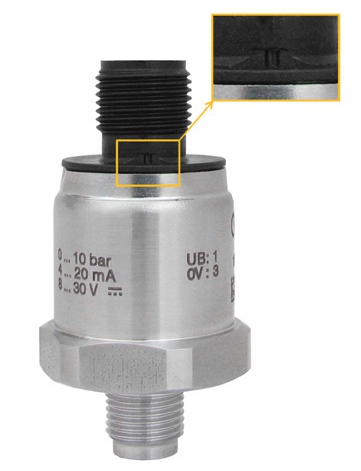Vent Hole In Pressure Sensors

Figure 1: The vent hole on a pressure sensor balances the pressure between the sensor and the atmosphere.
The vent hole in a pressure sensor equalizes the pressure between the sensor's internals and the external atmosphere. It ensures accurate measurements regardless of atmospheric changes and is vital for maintaining accuracy and reliability across various industrial and consumer applications. Additionally, the vent hole prevents damage from pressure build-up, extending the sensor's lifespan.
Table of contents
View our online selection of pressure sensors!
The purpose of a vent hole
A pressure sensor with a vent hole has the following benefits:
- Equalizes internal and external pressure
- Protects sensor integrity
- Enhances accuracy and reliability
- Facilitates moisture management
Equalizes internal and external pressure
The primary function of the vent hole is to equalize the pressure inside the sensor with the ambient atmospheric pressure. This is crucial because atmospheric pressure can vary significantly with altitude and weather conditions. Without a vent hole, the sensor might not accurately measure the pressure it's designed to monitor, leading to incorrect readings.
Protects sensor integrity
The vent hole helps prevent pressure build-up inside the sensor casing, which could otherwise lead to seal breakage or damage to the sensor's internal components. By allowing the internal and external pressures to equalize, the vent hole reduces the risk of physical damage to the sensor.
Enhances accuracy and reliability
- Compensates for temperature changes: Temperature fluctuations can cause air and other gasses trapped inside the sensor to expand or contract, affecting the sensor's accuracy. The vent hole allows these gasses to move freely in and out of the sensor, ensuring that temperature changes do not impact the measurement accuracy.
- Improves long-term stability: The vent hole contributes to the sensor's long-term stability and reliability by preventing pressure build-up and compensating for temperature-induced volume changes. This is particularly important in applications where sensors are expected to perform accurately over long periods.
Moisture management
In environments where temperature changes are common, condensation can form inside the sensor, potentially damaging its components. The vent hole helps minimize moisture inside the sensor, protecting it from water damage.
Learn more about pressure sensors in our various articles:
- Water pressure sensor - key features and uses
- Difference between pressure switch and pressure transmitter
- How digital pressure sensors work
- When to use digital pressure switches and sensors
- What is a pressure transducer - how does it work?
Pressure sensors without a vent hole
Many pressure sensors have a vent hole; however, some are designed without one. These sensors, known for their unique applications and benefits, operate based on principles that allow them to provide precise measurements even without direct atmospheric pressure equalization.
- Types and applications: Pressure sensors without a vent hole are for sealed or absolute pressure measurements. They are ideal for applications where external conditions, such as altitude or weather changes, can affect the measurement.
-
Design considerations
- Sealing: A pressure sensor without a vent hole must be completely sealed.
- Calibration: Calibration is critical for sensors without a vent hole because they cannot equalize pressure with the atmosphere.
- Temperature compensation: Temperature variations can affect the pressure inside a sealed sensor, leading to inaccurate measurements. Sensors without a vent hole have temperature compensation mechanisms to adjust for these effects.
- Material selection: Materials must be compatible with the measured media and capable of withstanding environmental conditions without degrading. This is particularly important for sensors used in corrosive or extreme temperature environments. Review our chemical resistance of materials article.







